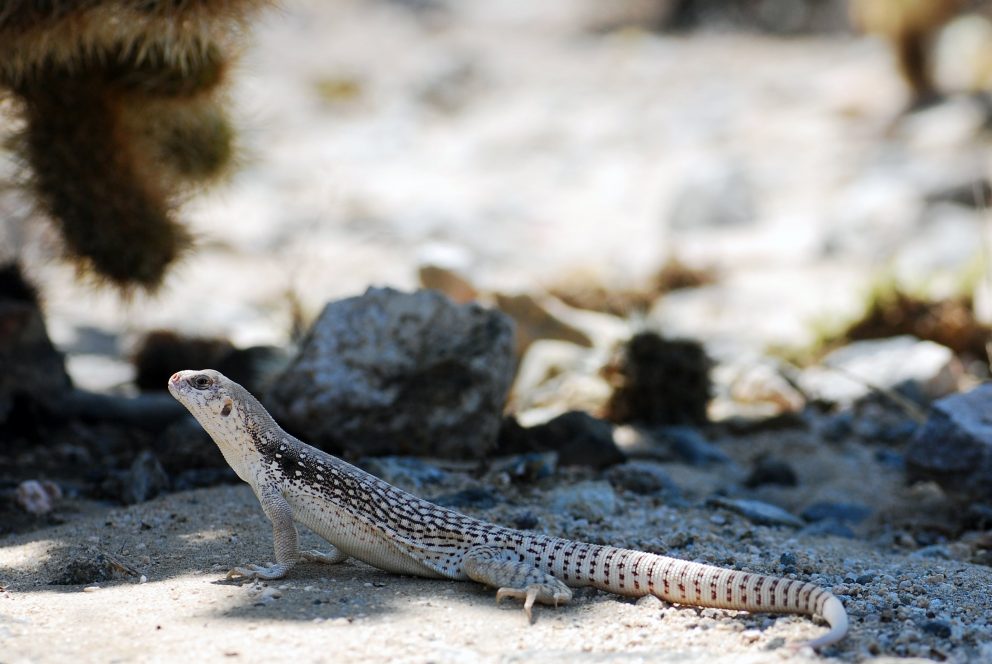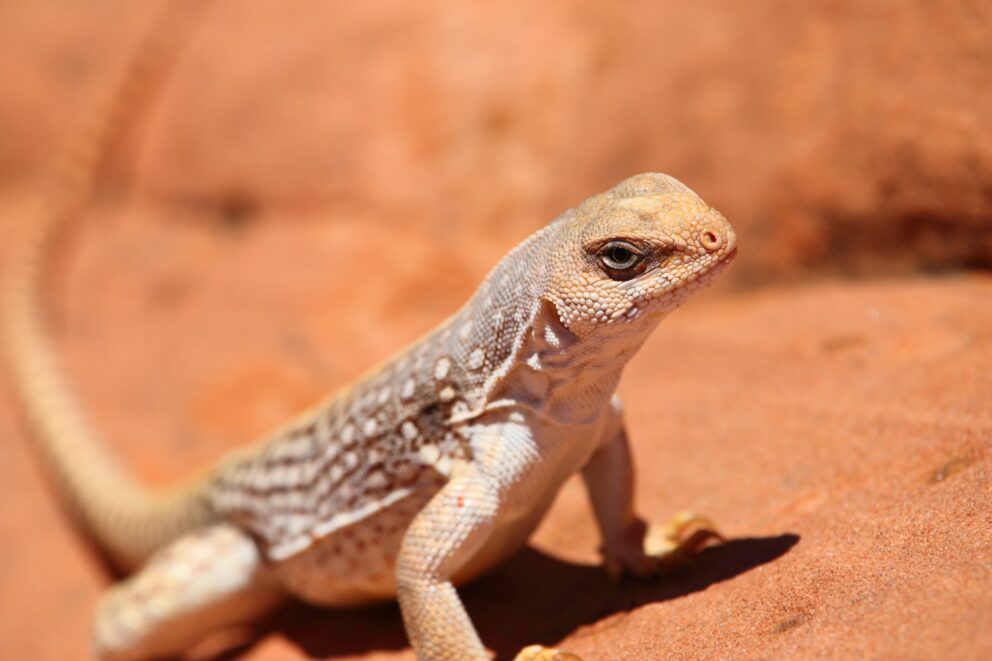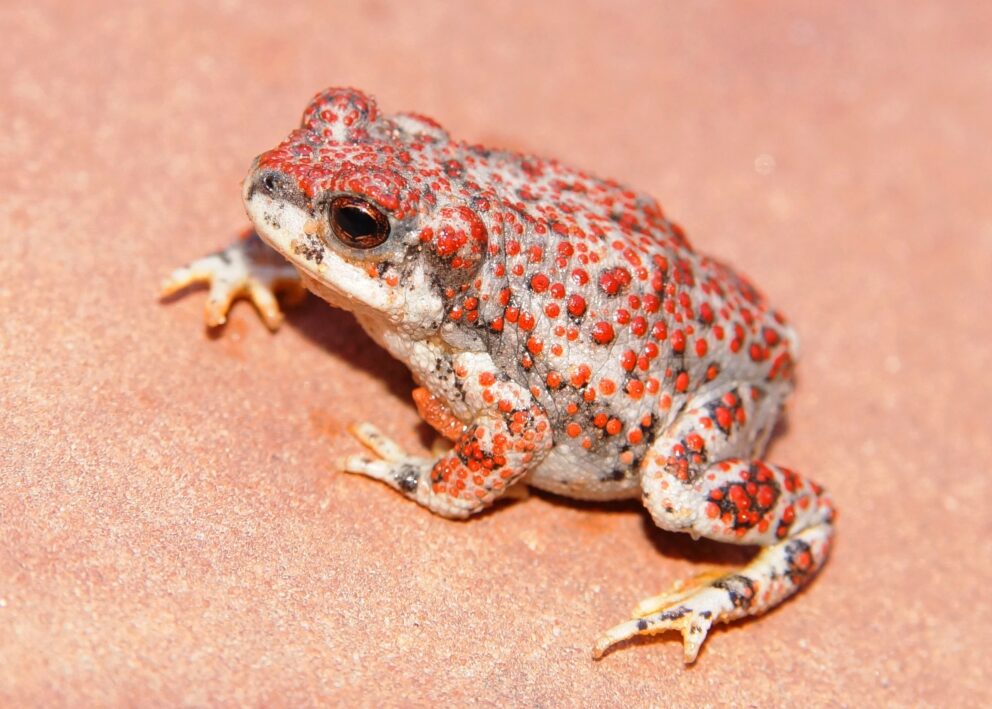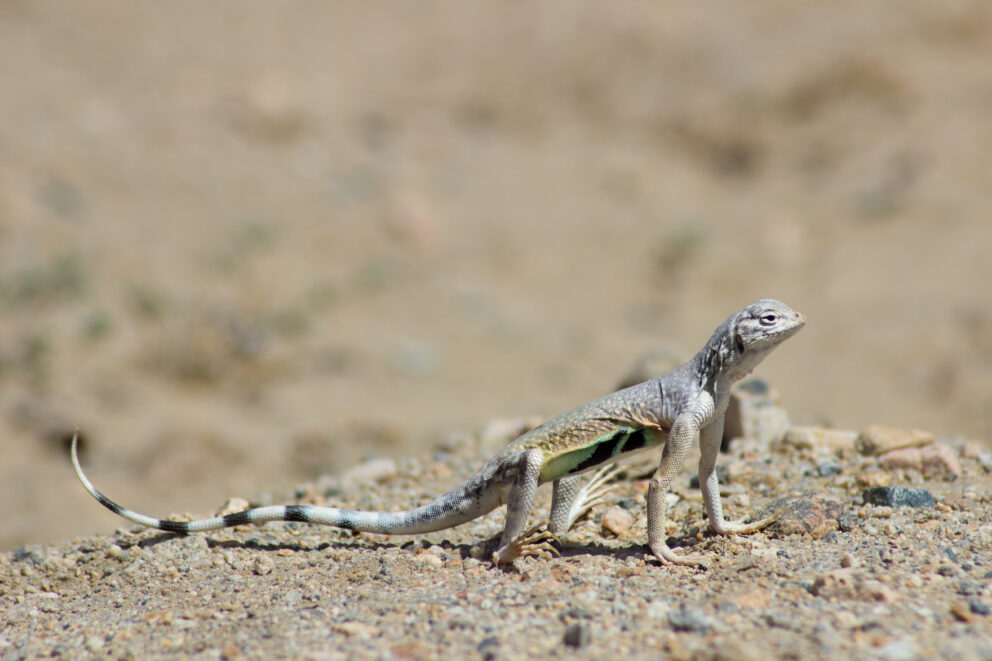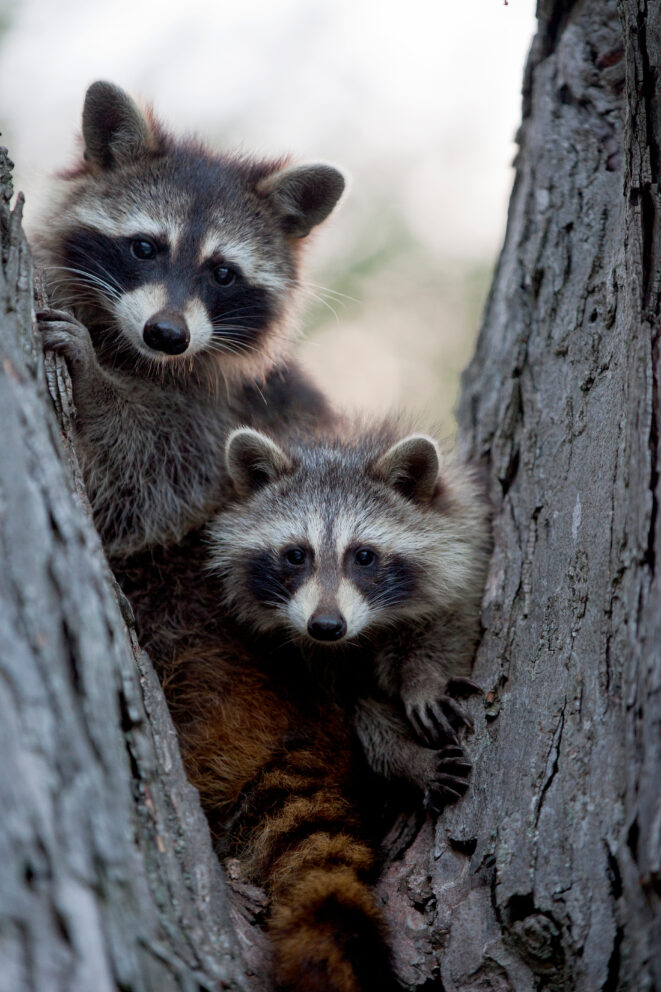- SCIENTIFIC NAME
- Dipsosaurus dorsalis
- CLASSIFICATION
- Reptile
- LIFE SPAN
- 2-7 Years
- STATE CONSERVATION STATUS
-
- Priority Species
- Unprotected
- FEDERAL CONSERVATION STATUS
- Least Concern
- GAME STATUS
- Non-Game
- Washoe
- Humboldt
- Pershing
- Churchill
- Mineral
- Lyon
- Douglas
- Carson City
- Storey
- Elko
- Lander
- Eureka
- White Pine
- Esmeralda
- Nye
- Lincoln
- Clark
Habitat & Range
Desert Iguanas live in the Mojave Desert in southern Nevada. They prefer brushy areas, especially with creosote bushes. Dry, rocky, brushy areas with plenty of areas to conceal themselves are preferred. They are not usually found in areas that do not have creosote bushes.
- Grasslands
- Mesquite Bosque
- Mojave desert
Threats
- Habitat Loss
- Overcollection
Natural History
Desert Iguanas are mostly vegetarian. They eat leaves, buds, and flowers, and the occasional insect or carrion. They are very dependent on the creosote bush. They eat the buds and flowers of creosote as well as burrow underneath and use the bush to conceal themselves.
These lizards are very well adapted to the desert heat. They are often one of the only lizards out active during some of the hottest parts of the day and are considered one of the most heat-tolerant reptiles in North America.
These lizards have no problems with a tight situation. When cornered by predators, they will wedge themselves into a tight space and inhale to expand their body making it very difficult for the predator to get them. Common predators for Desert Iguanas are raptors, snakes, and foxes.
Fun Facts
